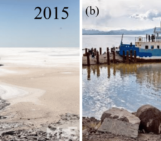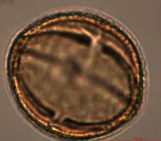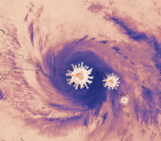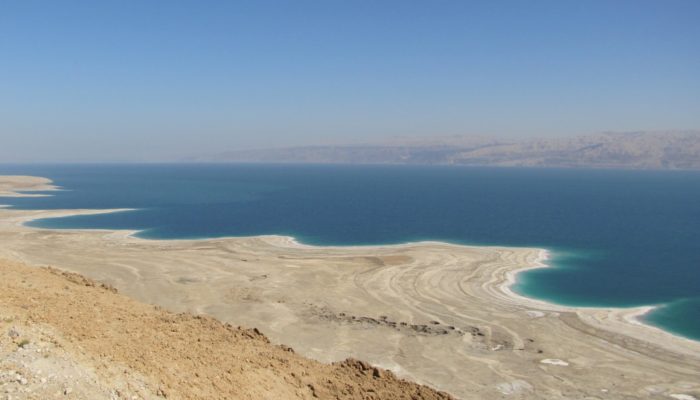
The Dead Sea is dead. Nothing can live there except for specialized microbes. The water with a salinity multiple times higher than seawater prevents a colonization by higher life forms. However, it does not prevent the input of organic material that can tell us stories about the past.
A unique sediment record
The Dead Sea, located at the lowest elevation on Earth – currently about 430 m below sea level, is the largest lake of the Levant (Eastern Mediterranean). The absence of higher organisms and the high salinity lead to unique sediments. Major sediment sequences are perfectly laminated because no bioturbation takes place. Moreover, the high content of salt and other minerals causes the deposition of different sediment types: halite, gypsum, aragonite. These sediment types deposit under different environmental conditions. That is why the sediments themselves tell about climate and hydrological conditions in the past (Neugebauer et al., 2014).
Dead Sea sediments are not only present at today’s lake bottom but also exposed along the shore. Dating the exposed sediments allowed insights into the exciting history of the lake. During the last glacial period, the southern Levant experienced a completely different setting with high water levels that filled large areas of the Jordan rift valley. About 25,000 years ago, highest lake levels were reached resulting in the merging of the Sea of Galilee and Dead Sea – two lakes today separated by more than 100 km (Torfstein et al., 2013).
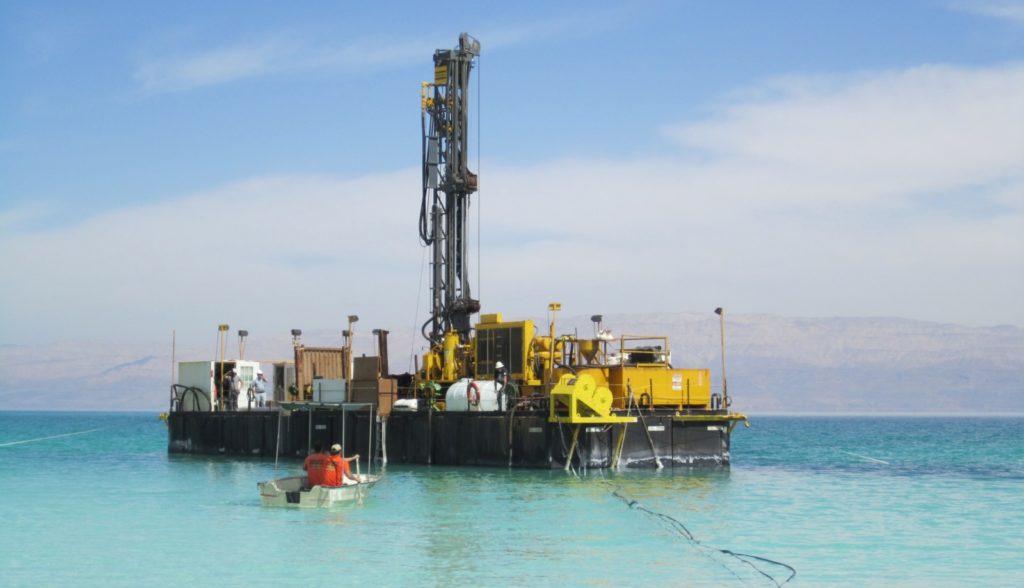
Figure 1: Drill platform of the Dead Sea Deep Drilling Project (photo: © DOSECC Exploration Services, http://dosecc.com/dead-sea/).
Human skeletons tell the story of humankind
Not only the geographical setting and changing landscape make the Levant so special. The archeological and paleoanthropological record is also extraordinarily rich. It is the place where the first fossils of anatomically modern humans (AMH) outside Africa were found. These, together with finds of younger bones of AMH and Neanderthals, make the area a history book of humankind.
Still, it was unknown in which environment the various tribes and types of humans lived. Was the Dead Sea surrounded by desert and steppe while the adjacent mountains were covered by Mediterranean vegetation as it is today? Was climate changing as rapidly as in Europe during the last glacial period? Did fires and droughts make life difficult?
Pollen and charcoal reveal the vegetation and fire history
To answer these and many other questions, the longest continental sediment record of the southern Levant was recovered in 2010/2011 by an ICDP (International Continental Scientific Drilling Program) campaign. The team of international scholars and mechanists drilled from a platform located over waters up to 300 m deep (Fig 1). They recovered 722 m of core material. The longest sediment record reaches 455 m below lake floor and covers about 220,000 years of environmental history (Neugebauer et al., 2014).
Pollen and micro-charcoal are well preserved in all kinds of Dead Sea sediments – even in halite hard as stone (Fig. 2). They tell us the story of vegetation and fire change during times of human migration. One example is the last glacial period, when Neanderthals occupied the southern Levant. Around 55,000 years ago, AMH entered the southern Levant again after an abandonment of several thousand years. A few thousand years later, the evidence for Neanderthals shrinks eventually pointing to the extinction in the region (Shea, 2008; Hershkovitz et al., 2015).
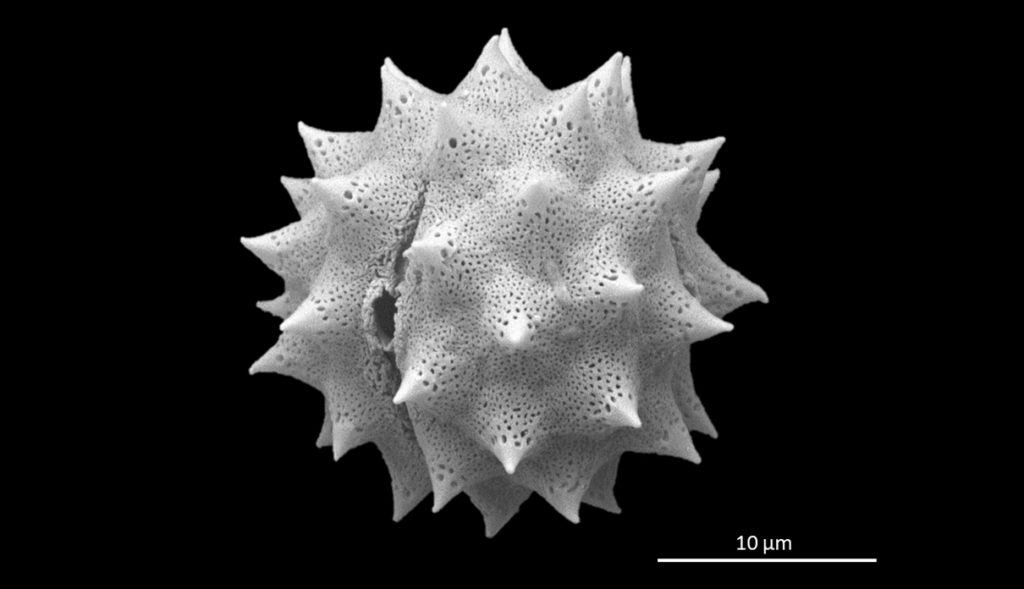
Figure 2: A 76,000-year-old pollen grain perfectly persevered in the Dead Sea sediments (Tubuliflorae/Asteroideae, SEM image by Andrea Miebach).
According to our study, Neanderthals had already occupied the southern Levant during a climatically dynamic phase with pronounced dry periods, high and unstable fire activity, and intensified resource uncertainty.
AMH, however, entered the southern Levant during a time of prolonged favorable environmental conditions. The vegetation formed a mosaic of steppe with herbs and dwarf shrubs, open desert vegetation, and Mediterranean woodland. This diverse landscape offered a large variety of habitats for animals and humans. No pronounced dry phases occurred, and water was constantly available in the ecosystem. Temperatures were certainly lower than today, but at least at low altitudes winters were mild. The fire activity was constantly very low, suggesting weak/short summer droughts.
To conclude, Neanderthals tolerated a wide spectrum of environmental conditions in the glacial Dead Sea region. More favorable and stable environmental conditions since 63,000 years ago then favored the renewed arrival and residence of AMH in the region (Miebach et al., 2019).
Modeling vegetation patterns of the past
Do you like pollen diagrams? These diagrams that show vegetation changes in time, that combine hundreds or even thousands of data points in one figure, that are made of dozens of wiggly curves? No is probably the top answer here. That is one of the reasons why we decided to show our results also in a different way, namely as a vegetation map (Fig. 3).
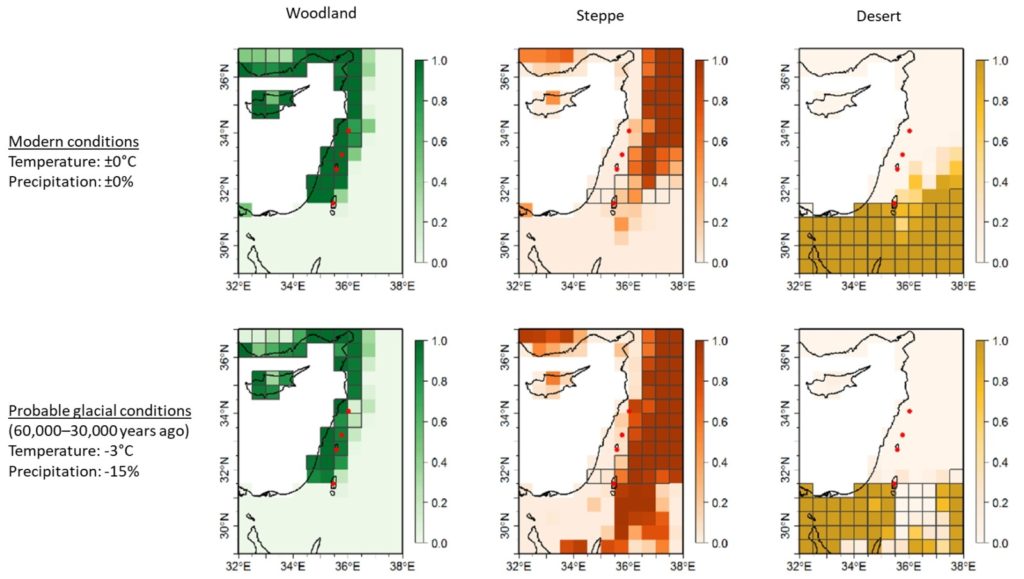
Figure 3: Modeled vegetation distribution in the Eastern Mediterranean region with probabilities for each vegetation type. 1 means virtually certain; 0 means virtually excluded. Vegetation pattern for modern and probable glacial (60,000–30,000 years ago) conditions are shown. The latter indicates an establishment of a steppe corridor, a shrinkage of desert vegetation and a reduction of Mediterranean vegetation at high altitudes. Figure adapted from Miebach et al., 2019.
To map the paleovegetation, we set up a method that combines recent vegetation data and recent climate data. The statistical relationship between both can be used to assess vegetation patterns in the past. We based our model runs on different climate scenarios derived from climate models and geoscientific observations, e.g. speleothem growth. Afterwards, we compared the model outputs with regional pollen data sets, such as the one obtained from the ICDP campaign. The result is a probable vegetation map for 60,000–30,000 years ago – the time when AMH entered the Levant again and eventually displaced Neanderthals in the region (Miebach et al., 2019).
This post has been edited by Janina Bösken and Gabriele Messori.
REFERENCES Hershkovitz, I., Marder, O., Ayalon, A., Bar-Matthews, M., Yasur, G., Boaretto, E., Caracuta, V., Alex, B., Frumkin, A., Goder-Goldberger, M., Gunz, P., Holloway, R.L., Latimer, B., Lavi, R., Matthews, A., Slon, V., Mayer, D.B.-Y., Berna, F., Bar-Oz, G., Yeshurun, R., May, H., Hans, M.G., Weber, G.W., Barzilai, O., 2015. Levantine cranium from Manot Cave (Israel) foreshadows the first European modern humans. Nature 520, 216-219. Miebach, A., Stolzenberger, S., Wacker, L., Hense, A., Litt, T., 2019. A new Dead Sea pollen record reveals the last glacial paleoenvironment of the southern Levant. Quat. Sci. Rev. 214, 98-116. Neugebauer, I., Brauer, A., Schwab, M.J., Waldmann, N.D., Enzel, Y., Kitagawa, H., Torfstein, A., Frank, U., Dulski, P., Agnon, A., Ariztegui, D., Ben-Avraham, Z., Goldstein, S.L., Stein, M., 2014. Lithology of the long sediment record recovered by the ICDP Dead Sea deep drilling project (DSDDP). Quat. Sci. Rev. 102, 149-165. Shea, J.J., 2008. Transitions or turnovers? Climatically-forced extinctions of Homo sapiens and Neanderthals in the east Mediterranean Levant. Quat. Sci. Rev. 27, 2253-2270. Torfstein, A., Goldstein, S.L., Stein, M., Enzel, Y., 2013. Impacts of abrupt climate changes in the Levant from Last Glacial Dead Sea levels. Quat. Sci. Rev. 69, 1-7.

